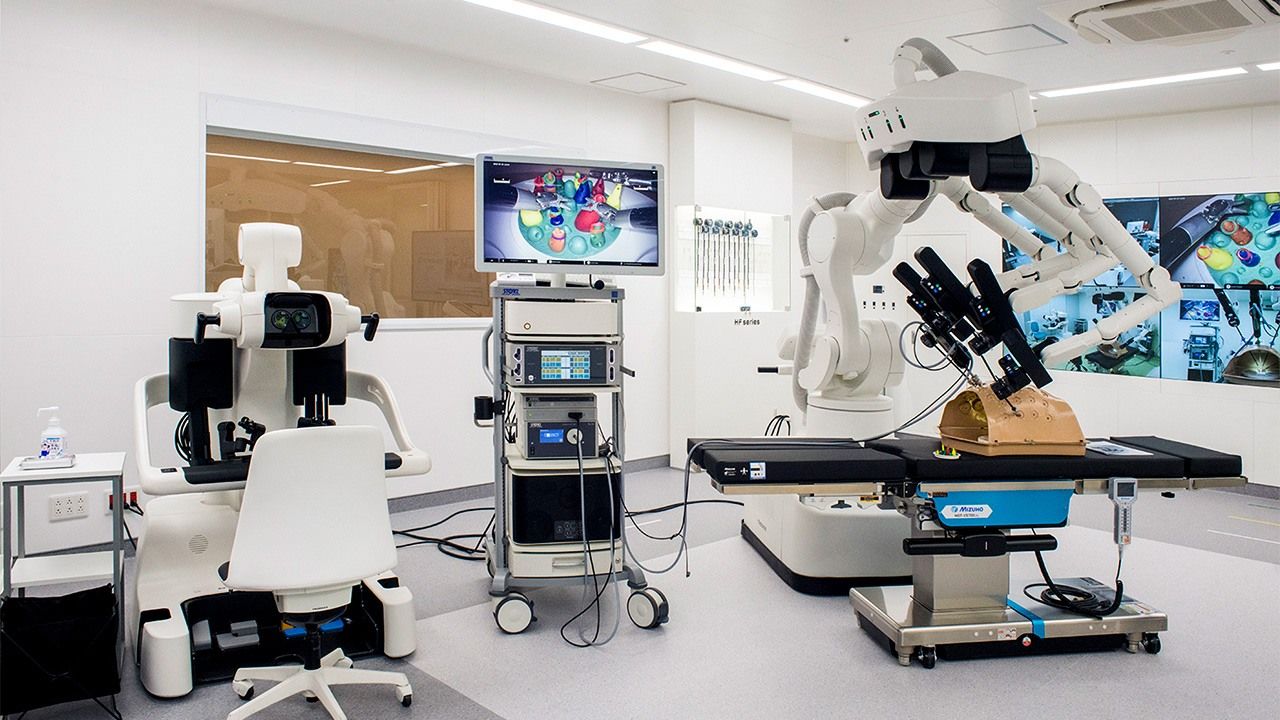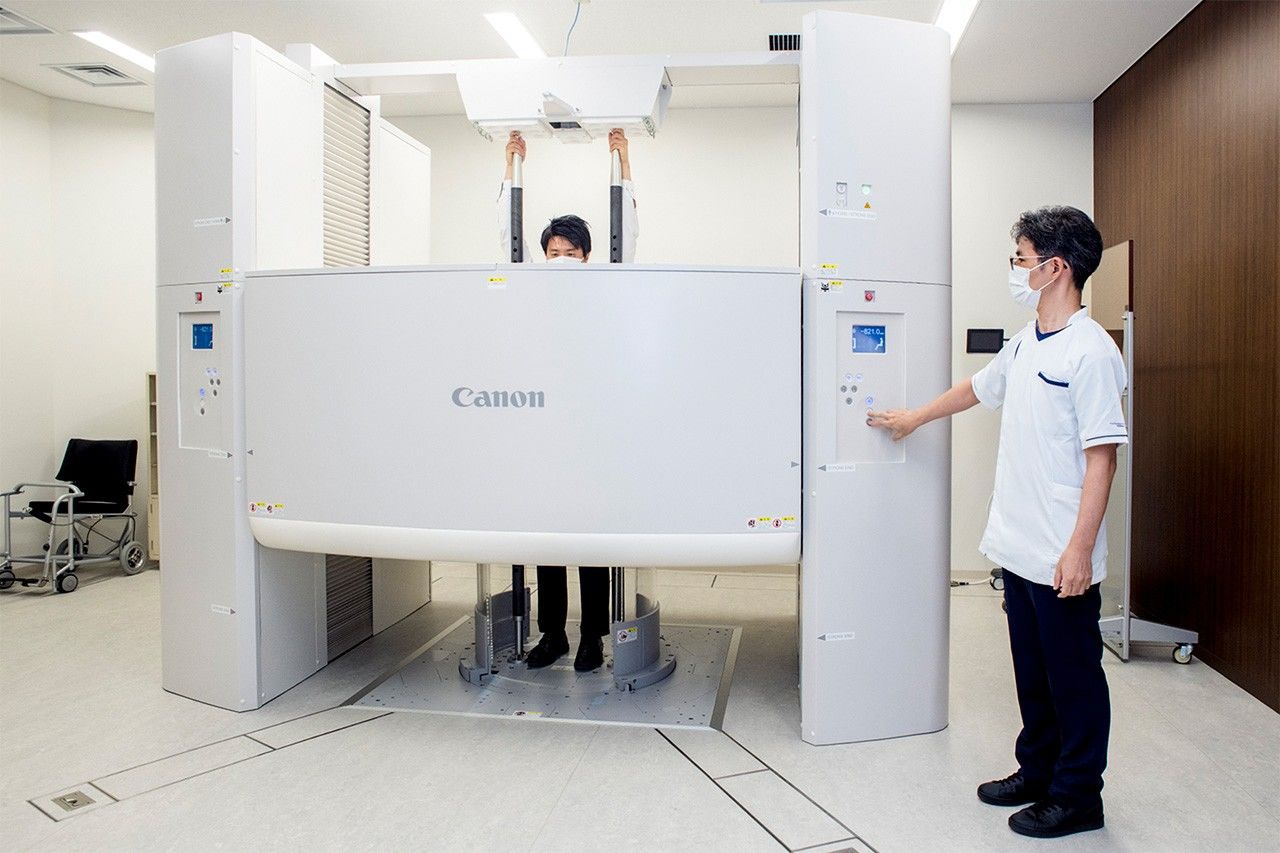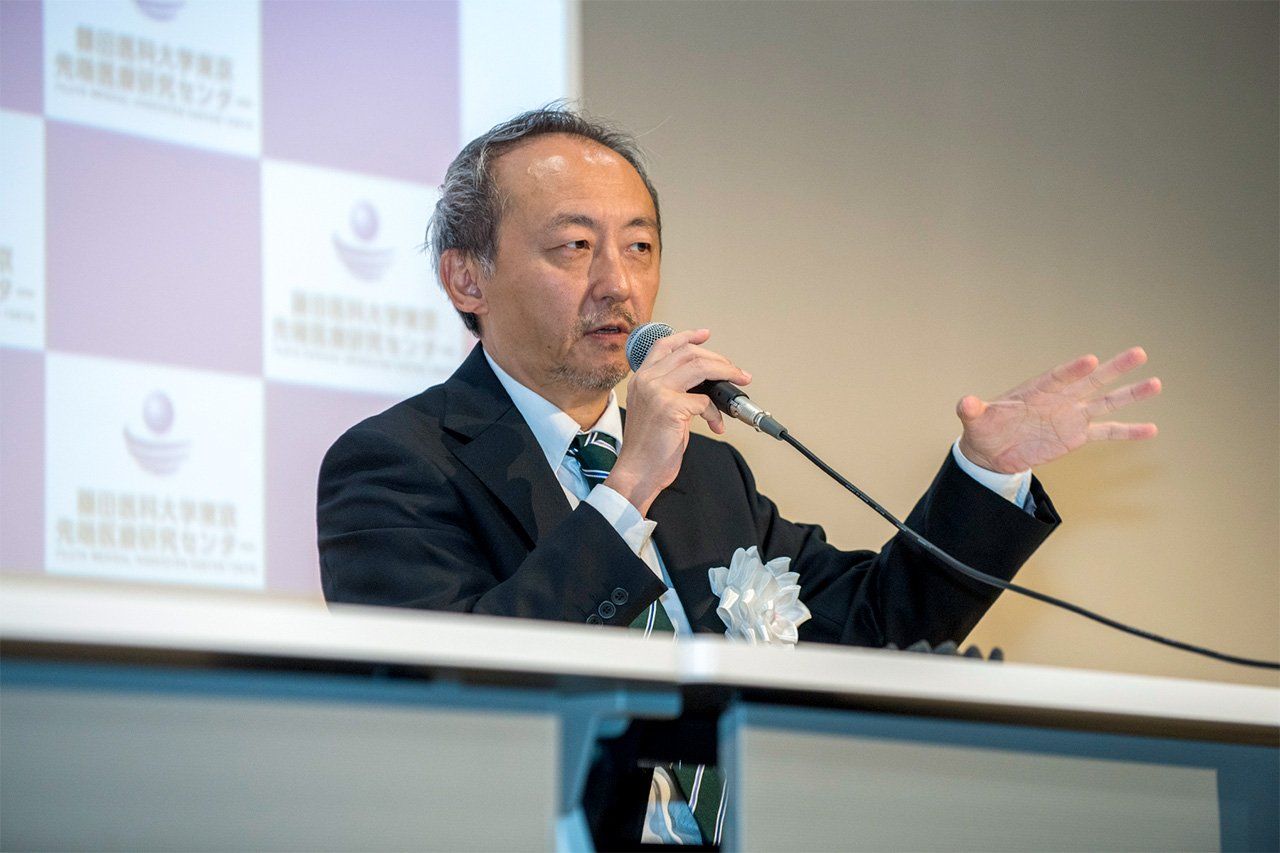
Cutting-Edge Treatment and Classical Hospitality Attract Medical Tourists to Haneda Clinic
Economy Travel Health- English
- 日本語
- 简体字
- 繁體字
- Français
- Español
- العربية
- Русский
Haneda Site to Treat 6,000 Medical Tourists Annually
The Fujita Medical Innovation Center Tokyo, which opened to great fanfare in October 2023, is a medical hub offering the latest Japanese treatments to the world. Situated near Tokyo’s Haneda airport, a major gateway to Japan, the 7,500-square-meter facility is on the small side for a university hospital, but Japanese hospitality is on display throughout, as evidenced by the sophisticated interiors and equipment and the large, private waiting rooms.

The waiting rooms feature a relaxed décor, and even views of parked aircraft. (© Yokozeki Kazuhiro)
Patients are attended to by an 80-strong team of doctors, nurses, technologists, and administrative staff. The facility’s six departments offer cutting-edge therapies not yet covered under Japan’s public insurance scheme. For example, oncological gene therapies use genetic analysis of cancers to enable faster diagnosis, both of initial cancers and relapses, and the selection of more effective drug treatments. Regenerative medicine, which involves returning cultured stem cells harvested from the patient’s own body to regenerate tissues and restore physical functions, can repair damaged knees, ligaments, corneas, retinas, and uterine linings. The facility also offers the latest fertility treatments, including embryo culture.
In addition, the hospital incorporates the latest technologies into its rehabilitation and examination operations. Rehabilitation sessions incorporate robots and state-of-the-art devices, jointly developed with partner corporations, that use magnetic fields to stimulate nerves and muscles. Physical checkups and examinations are performed using Japanese-manufactured medical devices of which only a few examples exist nationwide, including PET/CT scanners that produce high resolution images quickly, and CT scanners that can image the patient in a natural standing position.

Welwalk (a training and support device for paraplegic patients) is among the state-of-the-art equipment on offer at the rehabilitation center. (© Yokozeki Kazuhiro)

One of only three in Japan, this CT scanner images patients in a standing posture, allowing more accurate diagnosis. (© Yokozeki Kazuhiro)
Shinmura Shigeto, director of the hospital’s medical care division and deputy director of Fujita Medical Innovation Center Tokyo, says that he hopes to increase the options available to patients, and predicts the facility will treat 18,000 patients in its first three years of operation, 6,000 of which will be visitors from overseas. One thing is certain—this is one of the largest facilities in Japan for treating medical tourists.

Fujita Medical Innovation Center Tokyo deputy director Shinmura Shigeto also directs the Haneda Clinic. (© Yokozeki Kazuhiro)
Standard Cancer Treatments Popular
Fujita Health University care facilities have always had a distinguished reputation for caring for international patients. In fact, the university’s Toyoake (Aichi) hospital’s 26 departments and 1,376 beds make it the single largest medical facility in Japan. This flagship hospital makes an important contribution to the local community.

Fujita Health University Hospital in Toyoake, Aichi. (Courtesy Fujita Health University Hospital)
Murakami Tomonori, director of Fujita Health University Hospital and a divisional head at the International Medical Center, explains:
“Aichi Prefecture is home to many Toyota affiliates, and our hospital has a history of treating the many overseas migrants that work at these companies, as well as their families. Inbound tourism to Japan began increasing in around 2015, something that I believe raised the profile of medical tourism as well. It was our long history of providing medical services to Japan’s international residents that led us to actively accept medical tourists.”
What began as a trickle of medical tourists increased steadily, and in 2019 (before the COVID-19 pandemic), some 700 of the hospital’s patients were from overseas.
“Over 90 percent of our patients are from China,” says Murakami. “In addition to geographical proximity, I believe this is due to the growth of the medical tourism industry. The remainder are a mixture, with only Vietnam standing out.” says Murakami.
Fujita Health University Hospital experiences particularly high demand for cancer treatment from medical tourists. Surprisingly, many of these patients come for standard therapies (surgery and chemotherapy) rather than state-of-the-art treatments. I asked Murakami why patients come all the way from China for treatments that are standard in Japan.
“In China, patients are not informed in detail about their symptoms or treatment, and nurses tend not to be attentive to detail either, something that makes many patients distrustful of medical care in their own country. Japanese hospitals, on the other hand, offer excellent hospitality—it might be that these patients choose to undergo treatment in Japan in the interest of peace of mind,” says Murakami.
Many patients also come for physical therapy. With the relative scarcity of rehabilitation therapies in China, there is significant demand for state-of-the-art rehabilitation treatments (utilizing robots and hi-tech equipment), in which Fujita Health University excels.

A consultation room at the International Medical Center. (Courtesy Fujita Health University)
Ensuring Treatment is Seamless
The hospital’s ability to accept 700 foreign patients from different cultures who speak different languages is due to special arrangements that are in place for medical tourists. The first port of call is the hospital’s International Medical Center, a dedicated medical hub at which Murakami is stationed. The center employs a doctor, five nurses, and medical interpreters who can interpret into Chinese, English, and other languages, thereby providing seamless medical services. When the center receives an enquiry from a prospective patient, it first obtains credit and medical information from the patient’s home country, and then has the doctor interview the prospective patient over a video link using an interpreter, before proposing a course of treatment and giving an approximate quotation of costs and expenses. If the patient agrees, he or she pays the fee and organizes travel to Japan, with treatment commencing upon the patient’s arrival.
“Around 70 percent of those who get in touch with us end up undergoing treatment. After the course of treatment has been completed, in the case of cancer treatment, for example, it becomes necessary to monitor the patient’s progress with further tests and other follow-up procedures. While some patients opt to continue treatment in Japan, others wish to complete their treatment in their home country. We determine these details in consultation together,” says Murakami.
Since the hospital began taking medical tourists in 2015, it has implemented many improvements to its arrangements for accepting international patients, including producing globally acceptable templates of medical documents. There are still issues, however.
“Most problems involve money,” notes Murakami. “In cases where costs will exceed the initial quote, we are careful to run everything past the patient to ensure he or she does not complain about the additional charges. Some patients also express dissatisfaction about the admission charge that we levy on all patients. However, because we require patients to pay up front, over the last few years we have had almost no cases of nonpayment of hospital fees, something that’s currently an issue in Japan.”
Other problems are the result of cultural differences.
“A lot of patients say they don’t like the food. In the past, we’ve had cases of patients bringing spicy food into the hospital and stinking up the entire ward. Also, in China, it is customary for patients admitted to hospital to be accompanied by their whole family, and occasionally there are issues with large, noisy groups disturbing other patients,” says Murakami.
Communication problems due to interpreting and other issues mean that delivering medical services across borders is not always easy. Murakami explains why Fujita University Hospital is promoting medical tourism regardless:
“As members of the medical field, we just want to cure our patients, whether they’re from Japan or overseas. As the world becomes more international, I believe we need to create healthcare services that are open to the rest of the world as part of Japan’s efforts to cooperate internationally,” he says.
The expertise accumulated by Fujita Health University Hospital will also be put to use in the brand-new Fujita Medical Innovation Center Tokyo. Murakami explains:
“All the processes that are followed by the hospital when a patient travels to Japan, including the sharing of medical information and consultation with doctors, are also adopted by the Medical Innovation Center. It was the experience of the hospital that made the Center decide to use its interpreters as guides as well. In future, the hospital and the Medical Innovation Center will be working together to deliver on the expectations of those who visit Japan for treatment.”
(Originally published in Japanese. Reporting and text by Sugihara Yuka and Power News. Banner photo: The Hinotori, a Japanese surgical-assistance robot, is used to study remote surgery. © Yokozeki Kazuhiro.)